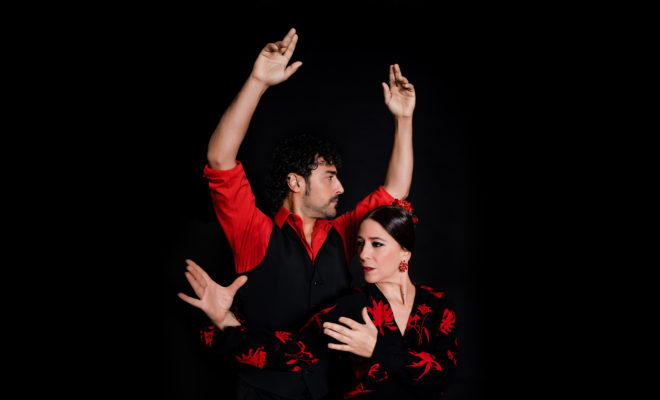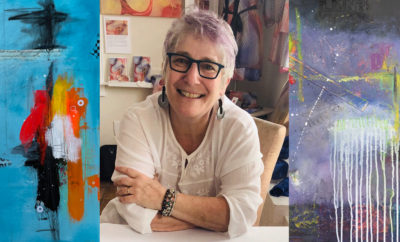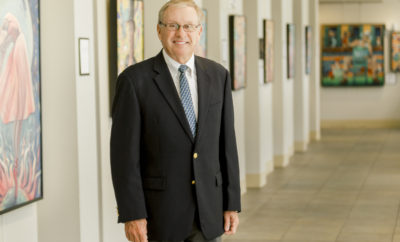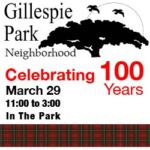
Arts & Culture
The Ringling’s Art of Performance
A New Curator’s Creative Genius
by Sylvia Whitman
Classical Indian Odissi dance. Pure Spanish flamenco. Dance theater from the Chinese diaspora. A Grammy-winning Cuban jazz pianist. A Mexican theater ensemble exploring history and democracy. A Haitian-American band inspired by African, Afro-Caribbean, and Afro-Latin cultures. Less than a year into her new job as the inaugural Ringling Museum Currie-Kohlmann Curator of Performance, Elizabeth Doud has collaged dynamic work from across the globe to delight and challenge Sarasota audiences from October through April 2020.
And this is just the beginning.
Doud says she made a conscious effort to build on the Ringling’s successes, particularly the annual Ringling International Arts Festival (RIAF), which expanded into the yearlong New Stages in 2018. As a multitalented arts scholar, catalyst, and performer based in Miami, Doud had attended and marveled at RIAF. However, intense “festivals are the things of crazy people,” she says. She’s grateful for the longer Art of Performance season (the successor to RIAF and New Stages), her goal being to “get that mix of celebration and excitement that a festival brings and stretch it out.”
In this first iteration of Art of Performance, she has aimed for a mix of music, dance, and more theater than in the past. “I’m also interested in hybrid forms. For instance, we have an animator who’s also a shadow puppet artist.” She sought out finished works that could draw varied audiences, those interested in cutting-edge work and those eager for easier entertainment. “There are a couple of pieces more challenging in content and maybe form, and a couple of accessible pieces that also speak to segments of the community that may not have seen themselves represented in the museum so far,” Doud says.
In December, for instance, the Art of Performance focuses on Mexican cultural heritage. Choosing just two works was tough. The adult-focused Tijuana from Lagartijas Tiradas grew out of a cast member’s anthropology experiment—assuming a false identity to work on an assembly line in a factory on the U.S. border. A narrative in Spanish with English supertitles, “this is a really good example of contemporary theater practice in Mexico,” says Doud. “Top tier. It’s what’s happening in Latin theater outside of the United States.”
A week later, a folkloric ensemble from Veracruz arrives, master practitioners in Son Jarocho, a music and dance tradition. “That’s a really family-friendly experience. It’s very recognizable,” says Doud. “It will remind you of what you think you know about Mexico, and the theater piece is showing you something that maybe you never knew. It’s a nice way to be in conversation with Mexican culture.”
To open that dialogue to more people, the Ringling is experimenting with matinees for Son Jarocho so schoolkids and daytime museum-goers can attend. The Ringling will also host a gallery walk and talk centered around the December 12 Feast of Our Lady of Guadalupe. “It’s a way for the museum to point to a holiday that’s really significant for the Latinx community that isn’t necessarily recognized by a lot of public institutions,” says Doud. A scholar will discuss the significance of the Virgin of Guadalupe and then link her to “all the virgins—all the Marys—that we have in our collection.”
Patrons of the Art of Performance can expect more of these contextualizations, thanks to the capacious schedule. In addition to scholarly talks and informal chats, the Ringling is scheduling master classes with visiting artists in its new studio space, which can accommodate about 25 students. “It’s an opportunity for people to have a very specific, practical interface with an art technique,” says Doud. “The intention is to share some of the expertise with the community.” Not every performer can linger off stage, but “when we negotiate the contracts with the artists, we always ask them to include that in the fee,” says Doud. “It’s something that we’re deliberately building in.”
Doud is quick to credit Ringling colleagues like Sonya Shay, who have spent years building relationships within the community that bring audiences into the theater. With expansive and eclectic experience that straddles the academic and the artistic, the curator herself is particularly well positioned to network with performers and arrange 360-degree interactions.
Born and raised in Seattle, Doud traveled abroad when young and learned Spanish. At the University of Washington, she studied Spanish literature with an unofficial minor in dance. “I was always getting picked up in smaller performance projects and crazy contemporary dance pieces and wild performance art. And I was like, ‘Whatever you want, I’ll do it,’” she says.
After teaching English as a second language overseas, she landed in Miami, “an accident of work, love, curiosity.” Miami at the turn of the century, before the boom, when young people could rent studio space for a couple of hundred bucks a month, turned out to be “a really wonderful place to have artistic projects blossom,” says Doud. She formed a collective with a Brazilian choreographer and a Cuban American actress, and for a decade they staged all kinds of projects and performances. Grant funding was growing. Both producer and performer, Doud says she was exploring: “What is community engagement? What does it mean to contextualize culture for large groups of people? That has really informed how I communicate with audiences.”
To supplement her income, she taught in Miami Dade College’s refugee education program and eventually became the college’s artistic director. In that role, she “started to understand the national ecology” of contemporary performance. Against daunting odds, risk-taking artists make a product; producers bring it to an audience. For any piece to survive the slog “is really alchemy,” Doud says.
To scratch her academic itch, Doud earned a master’s in creative writing at the University of Miami and then commuted to Brazil to earn a Ph.D. (working in Portuguese, of course) in performance studies. In contrast to theory-heavy American programs, the Federal University of Bahia welcomed a combination of theory and practical art making. Doud focused on performing arts in the climate movement.
So, Ringling audiences can expect Latin American and environmental themes to get heavy play. “Not exclusively, of course,” says Doud, but she think it’s important for the museum to join the “transnational conversation.”
In addition to looking south of the border, she wants to bring in “diverse narratives from the United States.” Likes most producers, she makes annual “pilgrimages” to New York City, but “we’re a big country,” she says. This year’s artist in residence, “doing developmental work in our studio space and on the grounds,” is a contemporary chamber opera pianist and singer from New York City. “I would never have met him had I not been in New York,” says Doud, “so I bow down to the temples of New York. But I also think that there’s a lot of other great music out there. Great theater being made. Great dance. Our string quartet that we’re bringing in April is from Chicago—a very hot center for contemporary classical music.”
On the climate front, Art of Performance will feature the group Artichoke Dance on Earth Day in April, combining performances inside and outside with a panel discussion and educational activities for families. And this month [November], the Ringling is hosting an Arts and Climate Change Incubator, a long weekend of activities and multidisciplinary panels orchestrated by New York playwright/activist Chantal Bilodeau.
“There are a lot of layers to it,” says Doud, who considers Bilodeau a kindred spirit.
Although heartened by recent media attention to the planet’s woes, Doud worries about burnout. “There’s a lot of outrage, which I feel all the time. I have this low simmering level of terror about what’s happening with the environment. But we cannot be in warrior protest mode all the time because that’s exhausting.” Climate change is “hard for us to process because it’s so big and so difficult for us to make a decision about how we might effect change,” Doud says. The incubator creates “a cool space for individuals to meet other people and find a way to talk about it.” Bilodeau blends heady science and philosophy with nuts-and-bolts suggestions and simple fun.
“Without sounding too esoteric or too hokey, it is really important,” Doud says. “We can’t be in a state of panic and fear and shock the whole time because we become paralyzed.”
Her goal for all the programs under her purview is to get audiences involved. Yes, you can sit back to watch or listen to amazing talent from around the world. But The Ringling is extending an invitation to the community to do more, to join in the Art of Performance.
For more information about the season, visit ringling.org/events/series/art-of-performance.







You must be logged in to post a comment Login